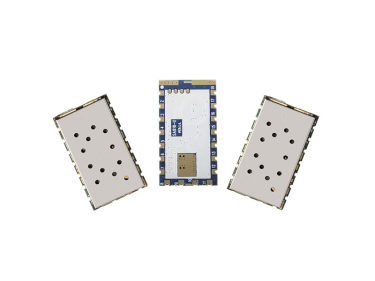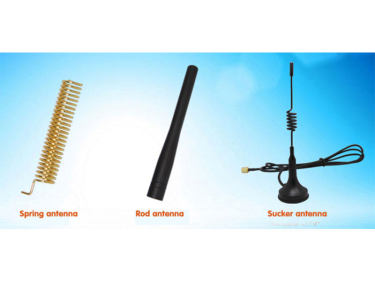Adjust the power of the wireless module
Jan . 2021
The power of the wireless module is a veryimportant parameter, it has a great impact on the working performance of the module. It is necessary for developers to choose the right power at the righttime in order to strike a balance between module operating time and performance.
This article describes how to set the power of the wireless module.
Generallyspeaking, modulation power can be started from software or hardware. Starting from software is to modify the corresponding register. Usually the chip'sreference manual has a description of adjusting power. Taking SX1262 as anexample, the chip has two commands related to output power, one is Set PaConfigand the other is Set TxParams. The parameters set by Set PaConfig are paDutyCycle, hpMax, deviceSel.paDutyCycle controls the duty cycle (conductionangle) of both PAs (SX1261 and SX1262). The maximum output power, the power consumption, and the harmonics willdrastically change with paDutyCycle. The values given across this data sheet are the recommended settings to achieve the best efficiency of the PA.hpMax selects the size of the PA in theSX1262, this value has no influence on the SX1261. The maximum output power canbe reduced by reducing the value of hpMax. The valid range is between 0x00 and0x07 and 0x07 is the maximum supported value for the SX1262 to achieve +22 dBmoutput power.deviceSel is used to select either the SX1261 or the SX1262.Aftersetting the power level of the output power, we should use the command Set TxParams to set the specific output power value. This command has two parameters, one is power and one is RampTime.Where power represents the specific output power value. Depending on the selected power range, power alsohas different value ranges. When the low power upper limit is selected, thepower value ranges from-17 (0xEF) t to +14 (0x0E) dBm; when the high power upper limit is selected, the power value ranges from-9 (0xF7) to + 22 (0x16)dBm. RampTime can be selected based on the recommended value.Finally, the power should be set through the setting register.
The following referenced settings:
voidSX1262SetPaConfig(void)
{
uint8_t CmdBuf[5];
CmdBuf[0] = SetPaConfig;
CmdBuf[1] = 0x04;//paDutyCycle
CmdBuf[2] = 0x07;//hpMax
CmdBuf[3] = 0x00;//deviceSel
CmdBuf[4] = 0x01;paLut reserved and always0x01
SPIWriteCmd(5, CmdBuf);
}
voidSX1262SetTxParams(void)
{
uint8_t CmdBuf[3];
CmdBuf[0] = SetTxParams;
CmdBuf[1] = 0x16; //22DBM
CmdBuf[2] = 0x00;//RampTime
SPIWriteCmd(3, CmdBuf);
}
The method of modifying power varies from chip to chip. Please refer to the correspondingmanual of the corresponding chip to modify the power.
In addition tosoftware settings, we can also start with hardware. For example, in some application scenarios, a long transmission distance is required, and the output power of a general low-power module may be insufficient. At this time we should consider high-power modules. For example, NiceRF has produced many modules with different power according to the different needs of customers.Taking the LoRa series data transmission module as an example, there are 100mW,1W, 5W, 30W modules for customers to choose from. At this time, the maximum output power of the module is determined by its own hardware. Users can choose the appropriate module according to their actual needs.
The above is a summary of the power adjustment of the wireless module. I hope it can be helpful to you.
 +86-755-23080616
+86-755-23080616
 sales@nicerf.com
sales@nicerf.com
Website: https://www.nicerf.com/
Address: 309-314, 3/F, Bldg A, Hongdu business building, Zone 43, Baoan Dist, Shenzhen, China


 English
English







